Houseplants are hot and the demand is stronger than ever. But how did the trend start, how did it develop, and how are the plants propagated, distributed and grown? In an article published recently, Michael Perry, a.k.a. Mr. Plant Geek describes it all and puts special focus on the dracaena, the dragon tree. With the content and pictures provided by US brokerage company Fleurizon - who imports starting material from all over the world and ships it to professional growers all over the world, Mr. Plant Geek explains the journey from this plant from propagation to the farm to the consumer. Read his article below.

Houseplant obsession
Yes, it’s true that social media has fuelled our houseplant obsession, and demand is stronger than ever. There are more than 3 million posts under the hashtag #houseplants on Instagram. It’s so popular that niche hashtags have stemmed off and added to the houseplant mania: for example, #houseplantsofinstagram, #houseplantclub and #indoorgarden.
Although the Instagram obsession started with cacti and then moved to succulents, this movement has made it far easier to get hold of rarer and more exotic plants, like Alocasia, Calladium and Spotted Begonias, again with relevant hashtags.
One houseplant that deserves a bit more love, however, is the Dracaena… I’ll unlock the history of this durable houseplant, and look at its journey from nursery plantation to living room…
Dracaena – the dragon tree
Dracaena is actually a genus of over 120 species of trees and shrubs, the biggest of which is the Dracaena draco, which can grow to around 25ft tall and equally as wide. Eeek, that wouldn’t fit in your lounge, even with a Victorian ceiling! However, the smaller species make excellent houseplants. D. fragrans, D. surculosa, D. marginata, and D. sanderiana are all popular houseplant varieties, and ones i used to grow as a kid!
The majority of varieties in the Dracaena genus are native to Africa; however, some have also been found in southern Asia and northern Australia. Because of the climate in these native habitats, Dracaena have developed the ability to be drought tolerant, making them excellent houseplants for the busy or forgetful consumer.
The name ‘Dracaena’ comes from the romanized form of the Ancient Greek δράκαινα – drakaina, meaning “female dragon”, and you can even find a substance in some of the larger varieties called ‘dragon blood’. This refers to the red sap produced by the trees, which was highly prized in ancient times a wound healing substance, a cure for diarrhoea and for alleviating fevers. It’s effectiveness as a ‘cure-all’ means that it is still used today.. (although I wouldn’t recommend it without some strong medical research and input!)
In the Mediterranean, the sap is also used as a dye, medicine, glue, breath freshener, and even a lipstick! In some sub-regions, the association with dragons encourages its use in ritual magic and alchemy!
The journey of dracaena marginata – from farm to home
One of the popular houseplant varieties that I mentioned is Dracaena marginata. This plant goes through a special journey from the farm on which its grown, all the way to the consumer's home, because its growers make use of the fascinating ‘air layering’ technique! This is a method of propagation for new trees and shrubs, and involves creating a new tree from the parent tree. It’s used because conventional cuttings are incredibly likely to root, so they need to make their roots BEFORE they are severed from the parent plant…!

The main plantation of Dracaena plants in Central America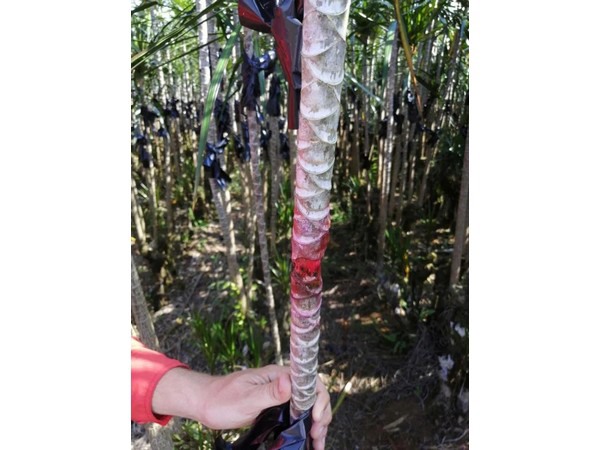
The stem is wounded, with a sharp cut. Rooting hormone is pushed inside, and then covered with sphagnum moss. Loose lack plastic is tied around the area.
This is how the crop of trees then looks!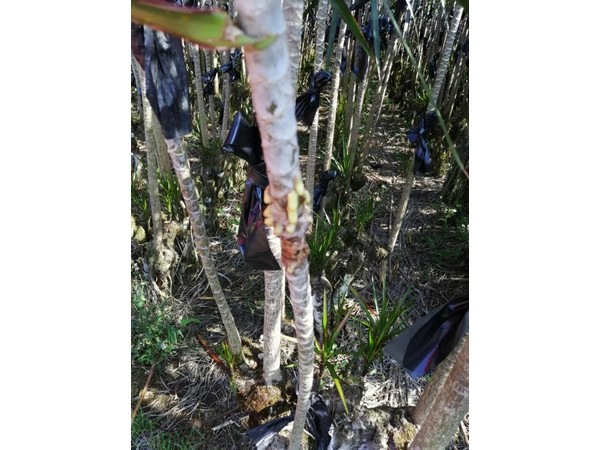
Within a few months, roots start to form from the wounded part of the stem, just like MAGIC!
These Dracaena marginata are grown on a farm in Central America. When a parent plant is ready to be propagated, part of its bark is carved away and rooting powder is brushed onto the exposed area. The area is then coated with a layer of sphagnum moss and the entire area is sealed in plastic to keep the moisture in.
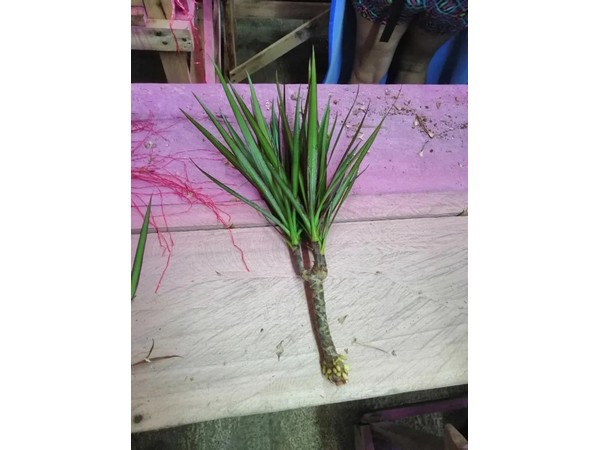
The young Dracaena plant is served from the parent plant, but only when there are adequate roots to anchor the plant and help it grow on.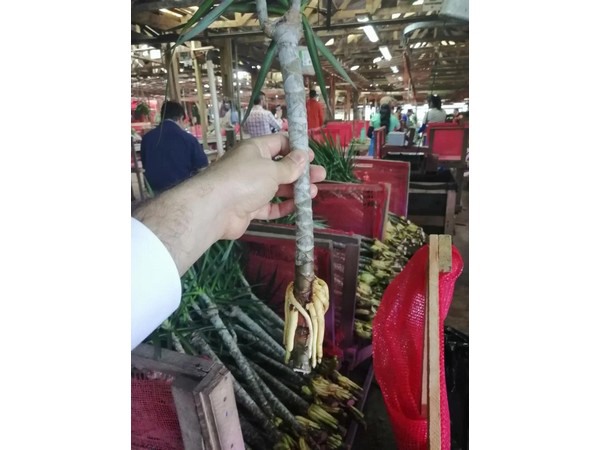
A specimen with strong roots.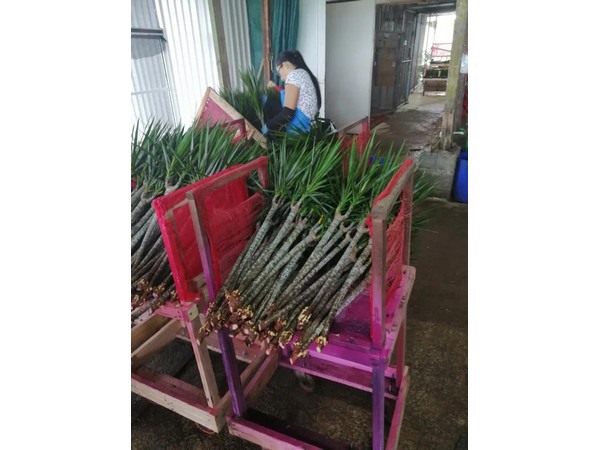
Plants are packed immediately, and shipped off without delay. They need to reach their potting destination in optimum condition, but must go through airport customs first!.
It can take from a few months up to a year for the roots to grow, at which point the new plant is removed from the parent and packed, sometimes piled high in secure crates. At this stage, the all-important broker gets involved, completing lots of complex paperwork and assisting its journey through international air travel. Brokers are also the conduit between the grower and the finished plant nursery, and may need an understanding of many languages including, of course, Latin!
After all the nitty-gritty is sorted, plants are shipped, and eventually arrive with the grower, whom could be located anywhere in the world!
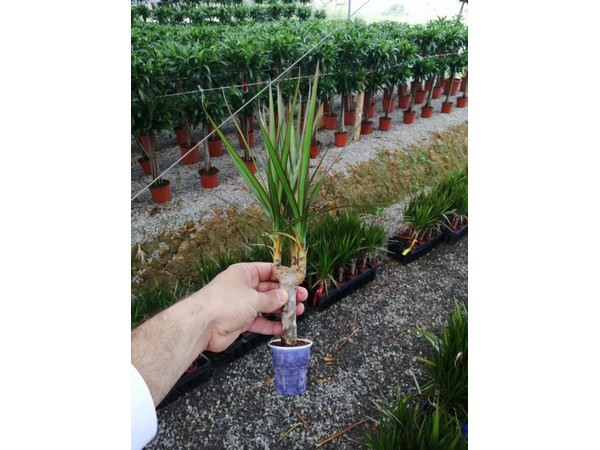
Once the plants reach the grower, which could be in any country, they are potted into soil. The reason they travel without soil is to comply with customs and phytosanitary regulations.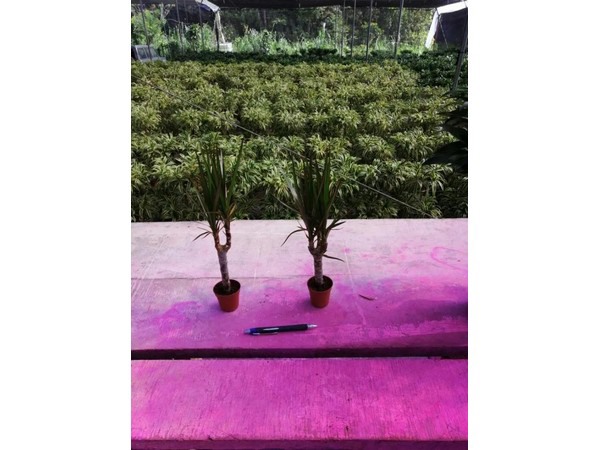
Plants may need potting on once more before they are ready to go on sale.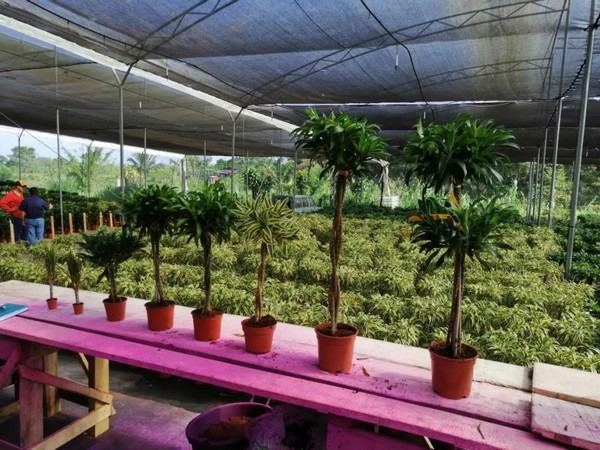
Plants may be offered for sale in a different range of forms, sometimes the stems are even plaited!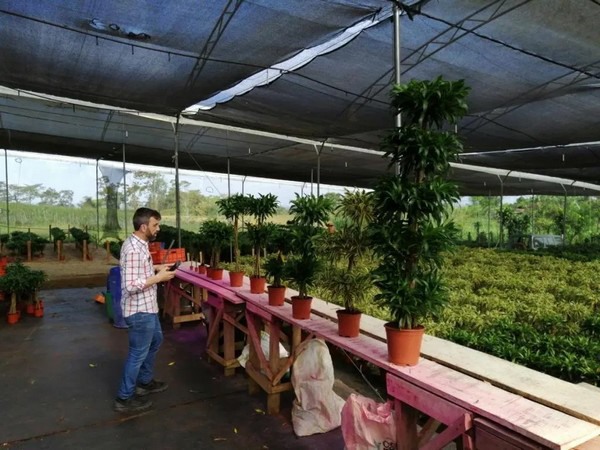
Buyers choose the plants they want to stock in their home store, garden centre or mail order plant shop!
The grower then pots up the plants, before distributing them to garden centres, where the lovely customer, purchase them for their lounge, dining room or hallway.
Source article: mrplantgeek.com
For more information: Fleurizon
Fleurizon
Frank de Greef
frank@fleurizon.com
www.fleurizon.com
